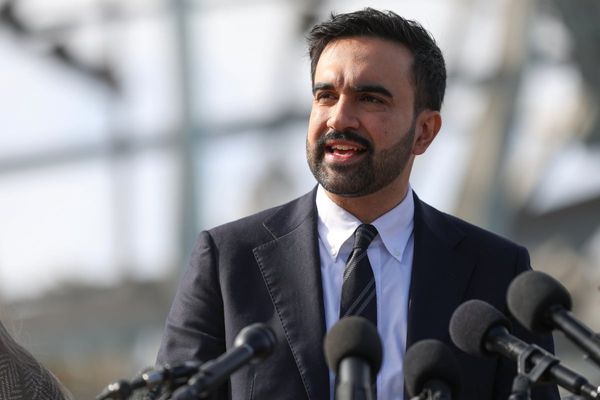
Picture this: It’s a Tuesday morning, and somewhere in America, a company’s CFO logs into their brokerage account and does something that would make most people’s palms sweat. They wire $1 million of their own money to buy shares of their company’s stock. Not stock options granted as part of their compensation package. Not shares they’re required to hold. Real money. Cash they could have spent on a beach house in Malibu or a Gulfstream timeshare.
Why would they do this?
That’s the question investors should be asking. And more importantly, it’s a question that has a remarkably consistent answer throughout market history: they know something the market doesn’t.
The Numbers Don’t Lie, But They Do Whisper
Walk through the academic journals and market studies from the past several decades, and a pattern emerges like a photograph in developing fluid. When insiders buy, stocks go up. It’s not magic, and it’s not guaranteed, but the odds tilt decidedly in favor of those who follow the money.
The research tells us that when corporate insiders purchase shares, those stocks have historically delivered abnormal returns of six to twelve percent over the following year. But here’s where it gets interesting: when you narrow the lens to just CEOs and CFOs, the picture sharpens. These aren’t middle managers hedging their bets. These are the two people in any company who see everything: the pipeline, the margins, the competitive threats, the opportunities that won’t hit analyst reports for another six months.
During market downturns, when fear grips Wall Street and stocks sell off indiscriminately, the insiders who step in to buy have seen their bets pay off even more handsomely. We’re talking about fifteen to twenty percent excess returns in the year that follows. These are the moments when the CFO looks at their company’s share price and sees not what the market sees (a scary headline or a missed quarter) but what they know: a temporary disconnect between price and reality.
Over longer periods, the evidence becomes even more compelling. Build a portfolio around significant insider purchases, and historically you’re looking at four to six percentage points of outperformance versus the S&P 500, year after year. Compound that over time, and you’re talking about wealth creation that would make most hedge fund managers envious.
The Million Dollar Question
But let’s return to that CFO on Tuesday morning, finger hovering over the “execute trade” button for a million dollar purchase. Or two million. Or three.
This is where insider buying transcends interesting data point and becomes high conviction signal. Because while a $50,000 purchase might be a rounding error in a wealthy executive’s portfolio (a gesture made to appease the board or satisfy ownership requirements), a seven figure purchase is something altogether different. It’s a bet that stings if it goes wrong.
Think about it from the insider’s perspective. They already have tremendous exposure to their company. Their salary depends on it. Their bonus depends on it. Their reputation depends on it. Their existing stock holdings depend on it. And now they’re choosing to double down with a purchase that represents real money, the kind that pays for college tuitions and retirement yachts.
The historical data validates this intuition in stark terms. Those small insider purchases under $250,000? They’ve predicted returns of maybe three to five percent over the subsequent year. Respectable, but nothing to write home about. Medium sized purchases between $250,000 and a million dollars? Now we’re talking seven to ten percent excess returns. But cross that million dollar threshold, and something changes. The excess returns jump to twelve to eighteen percent.
The million dollar mark seems to separate the wheat from the chaff, the routine from the revelatory. It filters out the noise: the mechanical purchases, the optics driven buys, the half hearted votes of confidence. What remains is conviction, pure and distilled.
When the Water Gets Choppy
There’s a particular species of insider buying that deserves special attention: the contrarian purchase during crisis. This is when a stock has been hammered, when analysts are downgrading and retail investors are fleeing, and suddenly there’s a Form 4 filing showing that the CEO just bought $3 million worth of shares.
These are the purchases that have historically produced the most spectacular returns. The executive isn’t buying into good news or momentum. They’re buying into fear, because they can see past the immediate turbulence to the clearer waters ahead. They know that the write down everyone’s panicking about is a one time event. They know that the product delay is temporary. They know that the market is pricing in a worst case scenario that isn’t going to materialize.
History is littered with examples of executives who bought aggressively during their darkest hours and looked prescient a year later. The market, in its manic depressive wisdom, often overshoots on the downside. The insiders know this. And when they act on that knowledge with meaningful amounts of capital, they’re essentially putting up a flare that reads: “This is overdone.”
Reading the Tea Leaves
Of course, not every insider purchase is created equal, and successful investors learn to distinguish the meaningful from the mundane. Context matters enormously.
Consider timing. An insider purchase made the day after earnings, especially disappointing earnings, carries more weight than one made in the quiet period between quarterly reports. The former suggests the insider knows the bad news is fully priced in, perhaps even overpriced. The latter might just be routine portfolio management.
Consider the pattern. When multiple insiders buy simultaneously (when the CEO and CFO both file Form 4s within days of each other), the signal amplifies. This isn’t one person’s hunch; it’s a consensus view among those who know the business best. It’s the difference between one expert witness and a jury of them.
Consider the proportion. A million dollar purchase means something very different to an executive who already owns $50 million in stock versus one who owns $5 million. In the former case, they’re adding two percent to their holdings. In the latter, they’re increasing their stake by twenty percent. The second scenario screams conviction.
And consider the source of funds. When an insider exercises options granted as compensation and immediately sells, that’s just harvesting value from their pay package. But when they write a check from their personal account to buy shares in the open market? That’s a conscious decision to take on more risk, to become even more concentrated in an investment they already know intimately. That’s when you know it’s real.
The Insider’s Advantage
At its core, insider buying works as a signal for a simple reason: information asymmetry. The CEO knows things the market doesn’t. They know whether the new product actually works. They know if the cost cutting initiative is ahead of schedule. They know if the regulatory approval is more likely than Street consensus suggests. They know if the competitor everyone’s worried about is actually struggling behind the scenes.
They can’t trade on material nonpublic information (that’s illegal). But they can certainly look at the publicly available information, combine it with their deep understanding of their business and industry, and form a view on whether their stock is mispriced. When that view is strong enough that they’re willing to put a million dollars or more of their own money behind it, the market would be wise to pay attention.
The Track Record
The beauty of insider buying as a signal is that it’s falsifiable. We don’t have to guess whether it works; we can look back and measure. And when we do, across different time periods, different market conditions, different industries, the answer comes back consistently positive.
This isn’t to say every insider purchase leads to gains, or that following insiders blindly is a winning strategy. Markets are complex, and even the most informed insiders can be wrong. Companies face unexpected challenges, industries get disrupted, macroeconomic headwinds overwhelm company specific strengths.
But in aggregate, over time, betting alongside insiders (particularly when they’re making large purchases) has been a winning proposition. It’s a tilt in the odds, an edge in a game where edges are increasingly hard to find. In a market full of noise and conflicting signals, watching what executives do with their own money remains refreshingly simple and remarkably effective.
Three Recent Examples: Following the Smart Money
Let’s examine three companies where top executives have recently put significant capital to work, demonstrating the kind of conviction that makes investors take notice.
Summit Therapeutics (Ticker: SMMT): The $75 Million Bet
In what can only be described as a massive vote of confidence, Robert Duggan, Co-CEO and Executive Chairman of Summit Therapeutics, purchased $75 million worth of shares at an average price of $22.70 per share. This wasn’t Duggan’s only purchase either: along with Co-CEO Maky Zanganeh, the leadership team has acquired nearly $12 million in additional shares in recent months, bringing their combined holdings to approximately 592 million shares.
Summit Therapeutics is positioning its oncology drug, ivonescimab, as a potential competitor to Merck’s blockbuster Keytruda. The insider buying suggests management sees significant upside potential in this ambitious challenge to one of pharma’s biggest franchises. What makes these purchases particularly noteworthy is their timing and scale: insiders have been buying consistently over the past year at prices well below current trading levels, demonstrating sustained conviction rather than a one time gesture.
Marvell Technology (Ticker: MRVL): United Executive Front
On September 25, 2025, Marvell Technology witnessed something remarkable: simultaneous insider buying across its entire leadership team. CEO Matthew Murphy led the charge with a $1.05 million purchase of 13,600 shares at $78.03 each. CFO Willem Meintjes bought 3,400 shares for $265,302. President and COO Chris Koopmans purchased 6,800 shares worth $530,604. Even Sandeep Bharathi, President of the Data Center Group, joined in with his own 3,400 share purchase.
When multiple C-suite executives buy on the same day, it’s not coincidence: it’s consensus. The semiconductor giant, which is heavily exposed to artificial intelligence infrastructure and data center demand, had just announced a $5 billion stock repurchase program alongside these insider purchases. The coordinated buying suggests management believes the market is undervaluing Marvell’s position in the AI boom. With fiscal 2026 revenue expected to grow 32.5% to over $7 billion, these executives are backing their growth story with personal capital.
NextDecade (Ticker: NEXT): Buying Into Adversity
Perhaps the most contrarian example comes from NextDecade, where CEO Matthew Schatzman purchased 281,500 shares on September 12th for just over $2 million at $7.14 per share. This purchase came during a difficult period for the company: the stock had declined significantly, and analysts were downgrading their price targets amid concerns about LNG market oversupply and financing conditions.
But Schatzman wasn’t alone. Director William C. Vrattos made two substantial purchases totaling 600,000 shares worth over $4.3 million, while Director Edward Andrew Scoggins Jr. added 15,000 shares. Major shareholder Hanwha Aerospace also stepped in with purchases exceeding $7 million during the same timeframe. This represents the classic pattern of insider buying that has historically produced the strongest returns: multiple insiders buying aggressively during a period of price weakness and negative sentiment.
NextDecade is constructing a major LNG export facility in Texas, and these insiders clearly believe the market’s pessimism about near term challenges is obscuring the longer term value proposition. Time will tell if their contrarian stance proves correct, but the pattern (significant buying during adversity by those who know the business best) follows the historical playbook of successful insider purchases.
The Bottom Line
So when you see that Form 4 filing cross your screen, showing that a CEO or CFO just made a seven figure purchase of their company’s stock, pause for a moment. Ask yourself: what do they know that I don’t? What do they see that the market is missing?
You might not arrive at a definitive answer, but the question itself is worth asking. Because history suggests that when executives bet big on themselves, the house odds shift in their favor. And in investing, as in poker, following the smart money has always been a sound strategy.
The captain is buying the ship. Maybe it’s time to come aboard.







